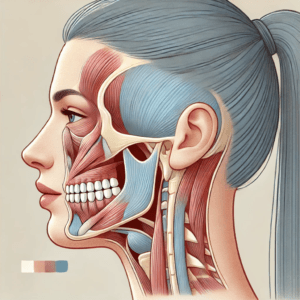Why Is My Vision Suddenly Blurry in One Eye Without Pain?
Table of Contents

Why Is My Vision Suddenly Blurry in One Eye Without Pain? 👁️
Let’s cut straight to it—
You’re sitting there, minding your business, and suddenly your vision in one eye goes blurry.
There’s no pain. No redness. No injury. Just one side that feels off—like a foggy lens on a camera.
So now you’re asking:
- Is this serious?
- Could it be neurological?
- Do I need to call an eye doctor now or just wait it out?
You’re not alone. Blurry vision in one eye with no pain is a surprisingly common symptom—and while it’s not always dangerous, it can point to something that needs medical attention.
Let’s break it all down: what’s normal, what’s not, and what to do next.
What Are the Most Common Symptoms with One-Sided Blurred Vision?
People describe this in lots of different ways:
- “My right eye just went foggy out of nowhere.”
- “One eye is blurry, the other is fine.”
- “I can’t see clearly out of one side but there’s no pain.”
- “Everything’s distorted or hazy in one eye.”
Sound familiar?
Let’s dig into the types and meanings behind this one-eye blur.
🚨 Is It Sudden or Gradual?
This is the first thing to note.
✅ Gradual Onset (Days to Weeks):
Usually less concerning, and may be due to:
- Dry eye or fatigue
- Refractive error (your prescription changed)
- Age-related eye changes (like cataracts)
- Astigmatism in one eye
🚨 Sudden Onset (Seconds to Minutes):
Could point to a more serious issue, especially if accompanied by:
- Floaters
- Flashes of light
- Visual field loss
- Recent head or eye trauma
😶🌫️ What If There’s No Pain At All?
Pain is often your body’s red flag. But with vision? Not always.
In fact, some of the more urgent causes of vision changes can happen without pain, including:
- Retinal detachment
- Optic neuritis (early stage)
- Transient ischemic attack (TIA or mini-stroke)
- Macular hole or tear
- Central serous retinopathy
⚠️ Don’t let “no pain” trick you into ignoring it.
🤔 Could It Be Blurry Peripheral Vision in One Eye?
If your peripheral (side) vision is fading or distorted, pay attention. This could indicate:
- Glaucoma (often develops silently)
- Optic nerve damage
- Migraine aura (even without headache)
- Retinal or neurological issue
🧠 One-sided blurry peripheral vision + other symptoms (like weakness or confusion)? Call a doctor immediately. It might signal a stroke or neurological event.
🔍 One Eye Blurry and Headache? Or No Headache at All?
With headache:
Could point to:
- Ocular migraine
- Cluster headache
- Increased eye pressure (like acute angle-closure glaucoma)
Without headache:
Possibilities include:
- Dry eye syndrome
- Vision imbalance (different prescriptions in each eye)
- Eye strain from screen use
- Retinal issues without pain
🧪 What Tests Will an Eye Doctor Do?
If you visit an optometrist or ophthalmologist, they may check:
- Visual acuity
- Eye pressure (tonometry)
- Retinal scan
- Pupil reaction
- OCT (optical coherence tomography) to scan optic nerve and retina
🧠 If a neurological cause is suspected, they may refer you for an MRI or CT scan.
🧘♀️ Can Stress or Fatigue Cause One Eye to Go Blurry?
Yes—kind of. While stress doesn’t directly damage your vision, it can trigger:
- Dry eye
- Eye strain from long screen time
- Migraine aura
- Increased cortisol (can lead to fluid buildup in the eye)
💡 Solution: Blink breaks, hydration, blue-light filters, and 7–8 hours of sleep.
🕒 When Should You Worry?
Here’s when to stop Googling and see a doctor immediately:
- Blurry vision came on suddenly
- Blurriness lasts longer than 30–60 minutes
- Vision is getting progressively worse
- There’s also numbness, slurred speech, or weakness
- You’re seeing floaters, flashes, or shadows
- You’ve had recent head or eye trauma
✅ Rule of thumb: If one eye feels “off” and it’s not improving quickly, get checked.
🗓️ What You Can Do Right Now
✅ Quick Self-Checklist:
- Blink slowly—could it be dryness?
- Cover each eye—compare clarity
- Reduce screen time for a few hours
- Use artificial tears
- Drink water and rest
- Schedule an urgent eye exam if symptoms persist
❓Frequently Asked Questions (FAQs)
Why is my right eye blurry but my left eye is fine?
It may be due to refractive changes, dry eye, or a localized issue like retinal swelling. See an eye doctor to rule out serious causes.
Can blurry vision in one eye go away on its own?
Sometimes, yes—especially if due to fatigue, dryness, or mild eye strain. But persistent or recurring blur should be evaluated.
Is blurry vision in one eye a sign of stroke?
It can be. If you have sudden blurry vision + confusion, weakness, or dizziness, call emergency services immediately.
What if I only notice blurriness in the morning?
This may relate to fluid buildup, dry eyes overnight, or corneal swelling. Use a humidifier and talk to your optometrist.
Can I treat blurry vision in one eye at home?
Only if it’s clearly due to fatigue or screen time. If it’s new, sudden, or persistent—get checked professionally.
🧠 Final Thoughts: Don’t Ignore the Blur
One eye going blurry isn’t something to just brush off.
Even without pain or redness, it could be your body’s way of signaling that something’s not right—retinal, optical, or neurological.
Best move?
✅ Get checked.
✅ Catch it early.
✅ Protect your sight before it becomes a bigger issue.
Your eyes are priceless. Treat them like it. 👁️❤️













Post Comment